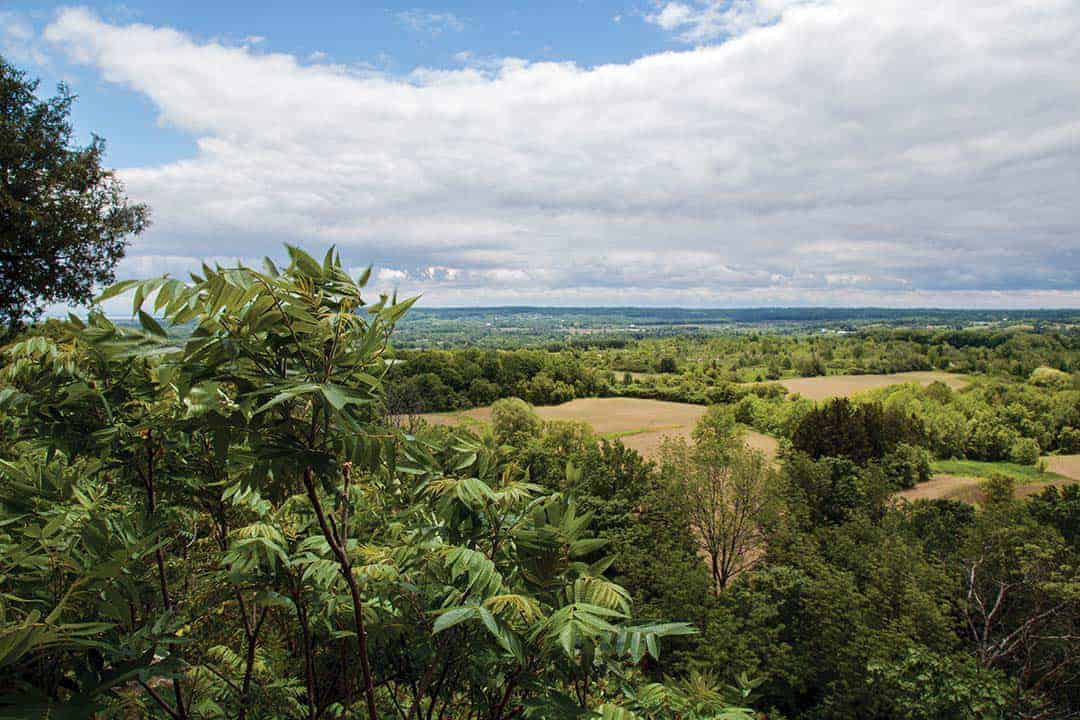On September 21, Ontario Premier Doug Ford announced that the government would return thousands of acres of land to an area of Ontario land called the Greenbelt that is protected from certain types of development.
The provincial government decided to open certain areas to housing construction in 2022. The decision to return the land followed a report that found that developers with ties to the provincial government made billions of dollars in profits from property value increases associated with removing the land from the Greenbelt.
The Varsity broke down the history of this piece of land and these latest developments.
What’s in a Greenbelt?
Ontario boasts the world’s largest Greenbelt, which includes protected farmland, forests, wetlands and lakes spanning over 8,100 square kilometres of land around the GTA. The former Liberal Ontario government established the Greenbelt in 2005 to preserve farmland and natural areas, to mitigate urban sprawl, and to develop sustainable communities.
Many researchers have noted the importance of the Greenbelt in helping clean the air, absorb excess water, and provide habitats — all of which have become increasingly important given the effects of climate change.
In an interview with The Varsity, Philip Pothen, who attended graduate school at U of T and is currently Environmental Defence Canada’s Ontario Environment Program Manager, said that the Greenbelt’s protected status means that farmers do not have to financially compete with residential developers to use the land. This assures farmers that they can remain on the land more long term and encourages them to farm in more sustainable ways.
Greenbelt controversy
In November 2022, Municipal Affairs and Housing Minister Steve Clark announced that the Ontario government would undertake a “land swap” by removing 30 square kilometres of land from the Greenbelt and adding another 40 square kilometres to another part of the Greenbelt. The Ford government claimed that it needed the land to fulfill their housing goals. This decision contradicted Ford’s 2021 pledge to preserve the Greenbelt from any development.
Pothen noted that the land the provincial government proposed adding to the Greenbelt already had other forms of legal protection that prevented development, making the addition “something that looked good in numbers that had no net increase [in protected land].”
Prior to Minister Clark’s announcement, housing developers had already purchased most of the land that the government would remove from the Greenbelt, although its protected status prevented housing development. After the announcement, developers saw the values of those land parcels skyrocket. Both Minister Clark and Premier Ford denied tipping off developers before the Greenbelt redesignation plans became public.
After provincial NDP leader Marit Stiles called for an investigation into Clark’s announcement in January, Auditor General Bonnie Lysyk released a report in August. She found that 14 of the 15 sites taken out of the Greenbelt were removed after suggestions by Minister Clark’s chief of staff, Ryan Amato, who had been influenced by two key developers: Silvio De Gasperis and Michael Rice. According to Lysyk, the developers who owned 14 of the 15 parcels of land that the Ford government removed from the Greenbelt saw an $8.3 billion increase in the property value of their Greenbelt land.
Lysyk also found that removing the land from the Greenbelt in the first place was unnecessary to meet the province’s goal of building 1.5 million new homes by 2031.
More criticism came on August 28, when the Chiefs of Ontario — an advocacy group supporting the sovereignty of First Nations across Ontario — called for the land to be redesignated back to its protected status, saying that the land swap violated the 2018 Williams Treaties.
Despite her findings, Ford later stated that he was confident there was nothing criminal about the Greenbelt redesignation. In the following weeks, key figures in the Greenbelt deal, including Minister Clark, resigned from provincial offices.
On September 21, Premier Ford announced he would reverse the Greenbelt land swap and promised to prevent future changes to the Greenbelt.
Looking forward
Christopher Cochrane — an associate political science professor and the interim chair of the department of political science at the University of Toronto Scarborough — discussed the effects of the Greenbelt on urban sprawl in the GTA in an interview with The Varsity.
Cochrane said that the government should institute “higher density housing in lower density neighbourhoods” to provide more units of housing for the province’s growing population, along with measures to protect the Greenbelt.
Cochrane said that, without governments changing zoning laws to allow for denser housing like low-rise apartments and condos, not allowing new residential developments in the Greenbelt might increase the cost of housing. “Governments (and Ontarians) must choose between protecting low-density neighborhoods (and existing property values) and preventing urban sprawl across the Greenbelt,” he wrote.
Advocates have credited zoning laws that prevent denser housing with helping drive increases in Ontario’s housing prices. In May, the Toronto City Council approved a plan to allow more multiplexes in an effort to increase housing.
With files from Jessie Schwalb.



No comments to display.